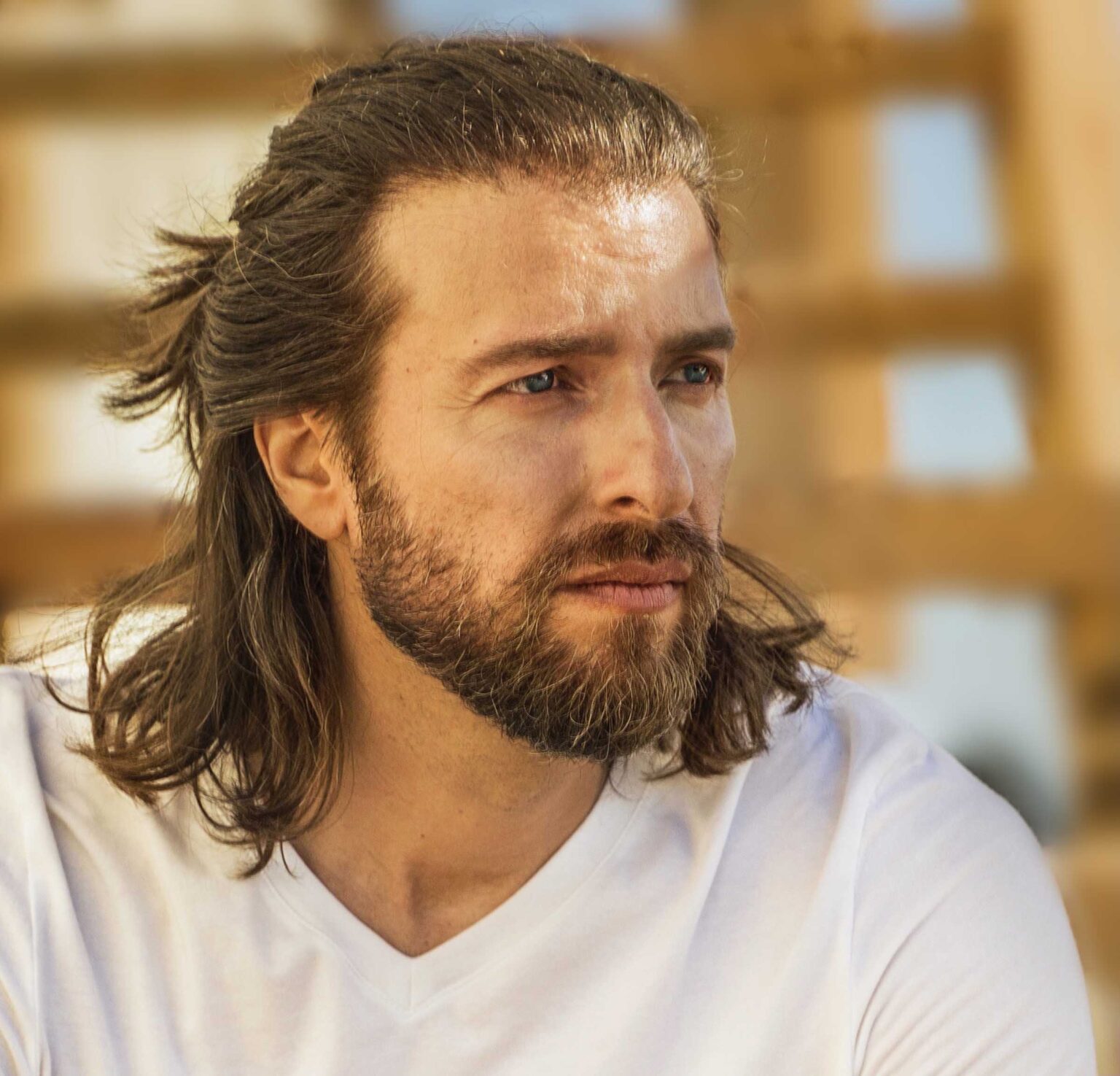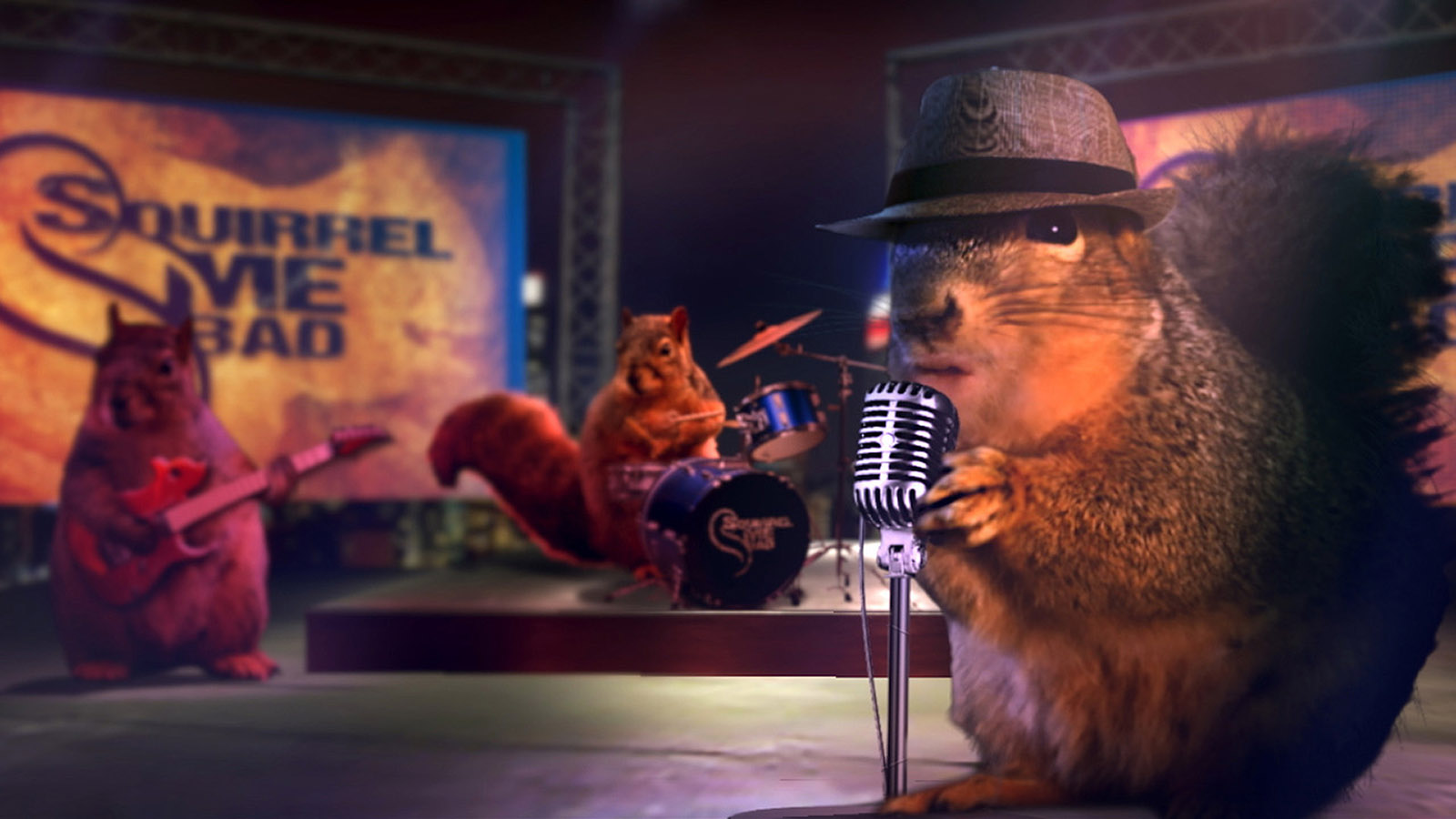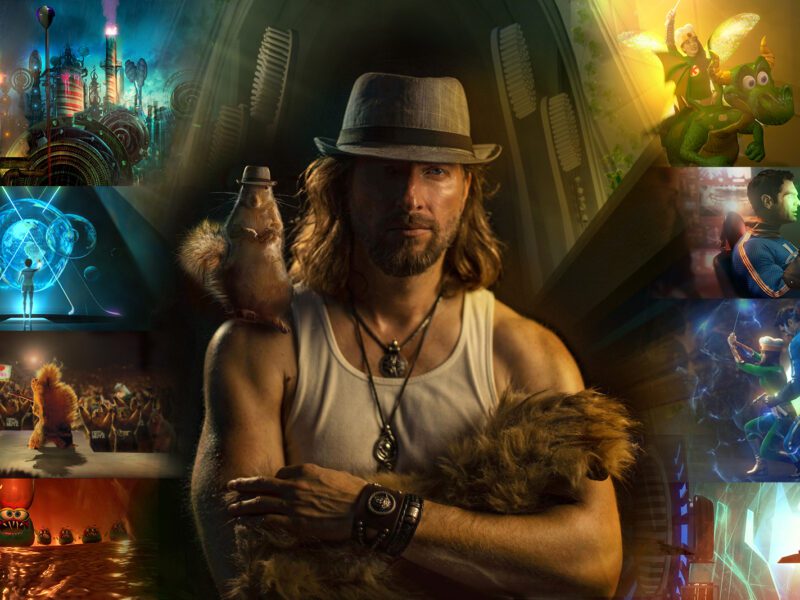
Get to know filmmaker/musician Daniel Robert Cohn
How do you tell the story of 2020—in a nutshell? Well, filmmaker/musician Daniel Robert Cohn found a few very talented squirrels to perform it all. Utilizing real squirrels from his own backyard, Cohn created an entire squirrel world that takes in that nutty year, nuts and all. Since he couldn’t get his squirrels to sing and perform, Cohn wrote and performed that himself and put the whole thing together–during quarantine. Other people did amazing things. Cohn did this.
Not one to leave well enough alone, Cohn has told more squirrelly stories over the last year, from Christmas to…the Squirellette! Viewers all over can check it all out at www.squirrelmebad.com ahead of the original video’s premiere at Dances with Films 24 in Los Angeles. Join Cohn as he answers Film Daily’s nuttiest questions.

What came first, your interest in music or your interest in filmmaking?
Filmmaking was definitely my first love. When I was 10 years old I watched a documentary about the making of the movie The Dark Crystal, and I was sold. I started making movies with elaborate puppets and sets in my basement. My interest in music came from scoring my films and jamming with my friends. I have always been extremely creative and filmmaking for me is the combination of almost every artform.
How did you first get started in animation?
My mom is a great artist and her art definitely influenced me. Although I experimented with a little stop motion and cartoon illustration when I was a child, I didn’t really start animating until much later in life. I was a professional screenwriter, writing screenplays for the studios when the 2008 WGA strike hit. So, in my search for a way to take a bit more control of my career, I taught myself animation and ultimately created two children’s DVDs.
What unique challenges do you encounter when making an animated film as opposed to live action?
The challenge of creating an animated film is that, unlike live action, every element on screen needs to be created from scratch. The World’s Gone Nutz is actually a hybrid of live-action and animation because I used real squirrels in front of green screens and then combined their natural movements with animation. So my challenge was to capture just the right movements and find ways to manipulate those movements to tell the story.

Do you prefer working in one form over the other?
As far as the process, I prefer the visceral co-creative experience of making live action films. But I do enjoy the complete creative control over every element on screen that animation affords.
Tell us where the inspiration for The World’s Gone Nutz came from. Did you intend to use the project to comment on the world from the beginning, or did that emerge as you worked?
Like almost everybody in the film industry during the pandemic, I was out of work, no actors, no crews, no locations . The entire world seemed to have gone completely nuts and I was looking for a project to do that could potentially make light of it all and make people laugh. One day I was looking out at the squirrels in my yard and I just thought… who better to tell the story of 2020 then squirrels. So I wrote the song The World’s Gone Nutz and simultaneously developed a massive library of squirrel videos to be combined with animation. The process continued to evolve into the short film.
You said that you worked on the project for sixteen hours a day throughout lockdown. How did you keep yourself motivated through the long days?
I absolutely loved the challenge of creating this film so I really didn’t need too much motivation. It brought back all the creativity and imagination that I had as a child, I was building human sized squirrel hands with materials from craft shops, and compositing them onto the squirrels. Every day was a new challenge and a new adventure.
What was the biggest challenge you encountered while working on the project?
One of the biggest challenges was actually organizing the enormous amount of squirrel footage and figuring out ways to best utilize it. To make the squirrels dance it would require using one looped squirrel movement for the top half of the body and another squirrel movement for the lower half then compositing it with my human sized squirrel hand to make it all seem seamless.



You’re the founder of the multi-media production company Namaste Pictures. What made you decide to start your own company?
I was never really the 9 to 5 office job type and I knew I wanted to be creative and be my own boss. Even in high school I had my own production company and I would make music videos for local bands. Namaste Pictures was the natural next step as my career expanded.
Do you find it hard to balance the business and creative sides of your job?
I don’t really enjoy the business parts of the job. If I could focus solely on the creativity I would. In general I just try to focus more on creating quality work and let the money follow.
What do you geek out about the most when it comes to filmmaking?
Visual effects. I really love to watch the behind the scenes of every film. One of my favorite things about filmmaking is the magic of it all and how you can find a way to literally tell any story that you can imagine.


What has been the biggest success of your career so far?
One of the biggest successes I’ve had was an independent feature film that I directed called Eyes Beyond Seeing. It was shot for very very little money and went on to get world-wide distribution and was broadcast domestically on network television.
What’s been your biggest failure, and what did you learn from it?
One of the biggest failures was in my first year of film school. I was directing a short film in which we had booked a studio for the weekend and I had planned a very ambitious shoot that required the construction of an entire subway car as well as a monster. We wound up expending so much time and energy creating the perfect set while not sleeping for 36-48 hours that when it came time to actually shoot, everyone was so exhausted that we couldn’t function and could not actually complete the shoot. It showed me the absolute importance of scheduling in real sleep.
Who are some of your current influences?
Steven Spielberg and James Cameron remain big influences in the scope of my creativity but a lot of the way that I think and conceptualize is actually more influenced by spiritual and metaphysical authors such as Abraham Hicks.
What are some movies that you think it is essential for every filmmaker to see?
I think for every person it will be a different film that inspires or guides them. For me I feel that Titanic was one of the best examples of story-telling, character, structure, cinematography and visual effects.


Are you involved in any filmmaking communities? How important do you think community is to a filmmaker?
I think community is a great way for a filmmaker to stay creatively alive and inspired. When I moved to Northern California I missed the creative energy and passion that comes from the shared dreams of creative people in Los Angeles. That is why my wife and I are moving back to Los Angeles this month.
What’s your mission as a filmmaker? Name the most important thing you want viewers to experience when watching your projects.
My mission as a filmmaker is to take intangible concepts and make them tangible. I like to make films that explore multiple perspectives on a single topic and find the spiritual basis behind it all. The word Namaste can be defined as the highest part of one recognizing the highest part of another, so my hope is that my films help people experience that deeper recognition in one another.


Do you have any advice for new filmmakers?
My advice to new filmmakers is make the movies that feel the most fun to you. It’s easy to get away from that simple idea as the demands of audiences change but I think that remains the most important part of creating something successful.
If you could only watch one movie for the rest of your life, what would it be?
I’m a sucker for good classic romantic comedy so I’d have to say, When Harry Met Sally.





